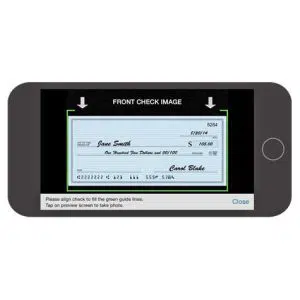Ten years after remote deposit capture became a commercial proposition, banks that offer the service are progressively allowing customers to deposit larger and larger sums. Indeed, as of this month, slightly more than half are applying per-item limits somewhere between $2,001 and $5,000, compared to 49% a year ago and 46% in March 2017, according to a new poll of 105 institutions by RemoteDepositCapture.com, an Alpharetta, Ga.-based research firm.
And while 74% of institutions cap their per-item limits at $5,000 or less, some 19% now have limits above $10,000, have limits customized for each mobile depositor, or have no limit at all, says John Leekley, chief executive and founder at RemoteDepositCapture. “That number continues to grow,” Leekley tells Digital Transactions News.
With RDC, consumers can deposit checks by snapping pictures of them with their smart phones and using technology built into their banking app to send the images. Ever since the option became commercially available, banks have sought to control the risk of bad or fake items by imposing dollar limits. These limits are sometimes applied monthly but per-item caps are more common, according to Leekley. “They’re just being cautious, it’s the prudent thing to,” he says.

But the experience so far has confounded the original expectations of how the risk of loss would play out, leading more institutions to loosen up, Leekley adds. “People thought it would be doomsday, but checks are the only payment type where fraud losses have gone down,” he says.
In fact, Leekley feels banks should be bolder than they are, especially as authentication technologies like fingerprint recognition are more common on phones. “The thing that surprises me is that [limits] are still stuck this relatively low,” he says. “I’m surprised these limits haven’t increased more quickly. With biometrics, you can verify who’s making a deposit. You can bounce [transactions] off various risk-management data bases.”
While banks may be reluctant to ditch per-item limits altogether (just 4% have done so, according to the latest poll), one trend now is to impose a limit that’s tied to customer lists segmented by risk. Ultimately, this trend could progress even farther. “What we see is an evolution of taking limits to each customer, where every customer has a custom limit,” Leekley says.
One thing that stands out in the research, Leekley adds, is that the more importance a bank places on RDC, the more likely it is to raise limits or experiment with custom limits. “You can tell which financial institutions have made mobile deposit a strategic priority and those that do it because they have to,” he says. “Those that do it as a strategic priority have found out the risks are manageable.”
High or low priority, RDC still accounts for a minority of check deposits compared to ATM or branch activity. Citing statistics from Mitek Systems Inc., a San Diego-based provider of RDC software, Leekley says 16% of all checks were deposited via RDC in the fourth quarter. “We’re making progress, but there’s still room for growth,” he notes.





